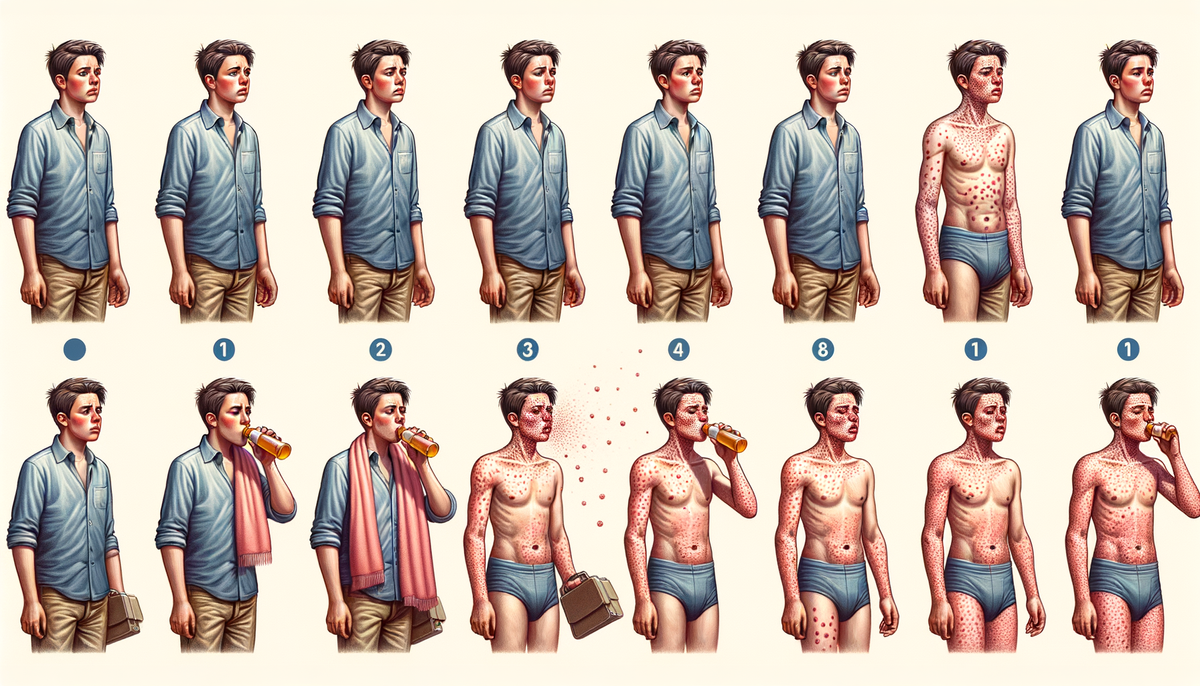Measles Symptoms: Onset, Progression, and Key Signs
Explore the progression and signs of measles symptoms to stay informed and protect your community.

Measles Symptoms: Onset, Progression, and Key Signs
Overview
Measles is a highly contagious viral disease with symptoms typically beginning 7 to 14 days after exposure. The illness progresses through several distinct stages with characteristic signs and can lead to serious complications, especially in young children and immunocompromised individuals. According to recent studies and reports, the importance of understanding measles symptoms has never been more crucial, particularly in the light of recent outbreaks on educational campuses and the persistence of misinformation about the disease.
For more information on recent updates regarding measles, visit this AMA article and updates about cases from the West Texas A&M University and ABC 7 Amarillo.
Typical Progression of Measles Symptoms
- Initial Stage (7–14 days after exposure):
- High fever (may reach or exceed 104°F)
- Runny or blocked nose (coryza)
- Cough
- Red, sore, watery eyes (conjunctivitis)
- Sneezing
- 2–3 Days After Symptoms Begin:
- Koplik spots appear: small, white spots with bluish-white centers on a red background inside the mouth, usually opposite the molars. These are a hallmark of measles and last a few days, often fading with onset of the rash.
- 3–5 Days After Symptoms Begin:
- Measles Rash:
- Starts as flat red or brown spots (on white skin; may appear purple, darker, or less visible on dark skin) behind the ears and on the face
- Spreads downward to neck, trunk, arms, legs, and feet
- Spots may become raised and can join to form blotchy patches
- Rash is usually not itchy and may present as different colors depending on skin tone
- Fever may spike again with the appearance of the rash (up to 104°F)
- Measles Rash:
Summary Table: Typical Timeline of Measles Symptoms
| Time After Exposure | Symptoms |
|---|---|
| 7–14 days | High fever, cough, runny nose, red/watery eyes, sneezing |
| 2–3 days after symptoms | Koplik spots inside mouth |
| 3–5 days after symptoms | Rash begins on face, spreads downward; possible fever spike |
Additional Notes
- The rash often begins as flat spots but can develop raised bumps on top.
- The rash may blend as it spreads, covering large parts of the body.
- The rash typically starts behind the ears and on the hairline, spreading over several days to the trunk and limbs.
- The illness is more severe in infants, young children, and anyone with a compromised immune system.
- Measles symptoms do not usually appear all at once and progress in the order described above.
When to Seek Medical Care
Measles can lead to serious complications and should be treated as a medical emergency—especially in babies, young children, or if someone is immunocompromised. Seek immediate health care if measles is suspected.
Visual Differences in Rash by Skin Tone
- On lighter skin: rash appears red or brown.
- On darker skin: rash may appear purple, darker, or less visible; look for changes in skin texture or raised bumps.
Summary
Measles typically starts with cold-like symptoms and high fever, followed by the appearance of Koplik spots and a progressing rash that spreads from the face to the rest of the body. Other symptoms—such as cough, runny nose, and conjunctivitis—often accompany the disease throughout its course. Measles is highly contagious and immediate medical attention is warranted if infection is suspected.
Practical Takeaways
- Ensure vaccinations are up-to-date as the MMR vaccine is highly effective at preventing measles.
- In the case of an outbreak, minimize contact with infected individuals to prevent disease spread.
- Educate communities and dispel myths surrounding measles to aid in better outbreak management.
Call to Action
If you are in the healthcare profession or involved in business leadership, ensuring the health and safety of your community should be a priority. Consider exploring more in-depth information on measles symptoms and prevention measures by consulting with healthcare experts and accessing resources available through your local health departments and recent medical studies.




